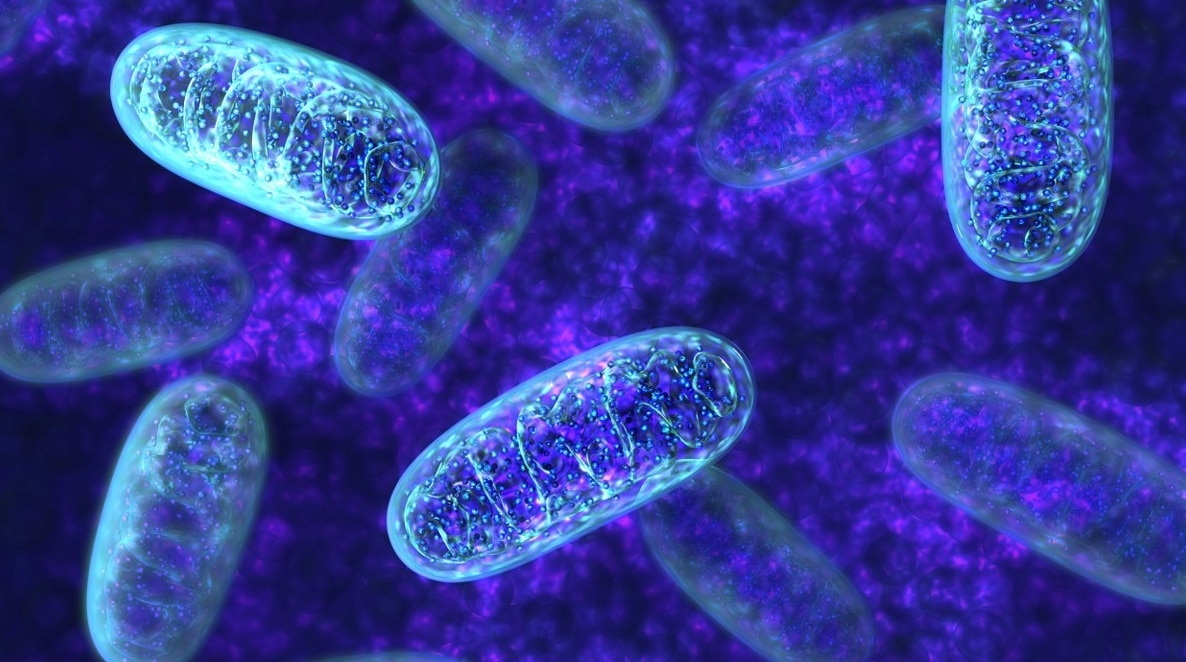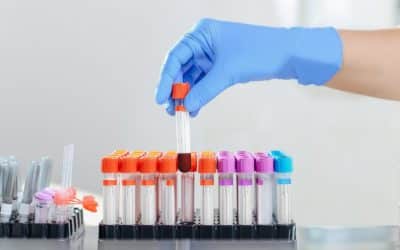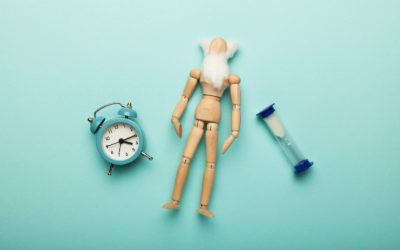
The mitochondria are the powerplants of our cells. They generate the energy cells need to function.
The reason why we eat food and breathe oxygen is to mainly keep our mitochondria going.
The sugars, fats and amino acids from our food, and the oxygen we breathe, are used by the mitochondria to generate ATP (adenosine triphosphate), which is a small molecule that provides most of the energy our cells need to function.
More precisely, ATP makes things work by attaching one of its phosphate-groups to other proteins, changing the shape of these proteins so they perform their function.
For example, when a phosphate from ATP attaches itself to a muscle protein, this protein changes its shape, becoming a bit shorter. When this happens in thousands of muscle proteins in millions of muscle cells at the same time, the entire muscle contracts, enabling you to wave goodbye, speak or jump around.
Similarly, when ATP hands over a phosphate, attaching itself to a channel protein, the protein opens up, letting specific substances inside the cell. When ATP attaches itself to an enzyme, it changes its configuration so it can start breaking down molecules. And so on.
In other words, the mitochondria are pivotal for cellular functioning. Without mitochondria, complex cells, and complex life would not be possible.
Where did our mitochondria come from?
Interestingly, mitochondria in fact derive from very ancient bacteria. About two billion years ago, small, ancient bacteria got engulfed (eaten) by larger bacteria. But instead of being digested by the larger bacteria, a collaboration (“symbiosis”) happened, in which the smaller bacteria (ultimately becoming mitochondria) would generate energy for the larger bacteria (which would become “eukaryotic cells”, which are the cells you are composed of – just like all other mammals, plants and fungi on this planet).
This also explains why mitochondria have their own DNA: they derive from ancient bacteria which had their own DNA. This also explains why specific substances that impact the mitochondria in our cells, can also impact the bacteria in our gut, given they still share some similarities. This will become relevant when we talk about the anti-aging drug metformin.
Mitochondria and aging
Unfortunately, when we get older, our mitochondria start to decline. Various factors contribute to the aging of our mitochondria, such as:
1. Free radical damage to mitochondria
The DNA in our mitochondria gets damaged by free radicals (reactive particles), mainly caused by the many chemical reactions that take place in the mitochondria.
2. Damaged mitochondrial DNA
The DNA in our mitochondria gets damaged easily. Mutations occur about 10 times more in mitochondrial DNA compared to the DNA in the nucleus (R).
There are various reasons for this: the mitochondria divide (copy themselves) a lot and every time when the mitochondrial DNA is copied small errors are made given the copying process is not perfect. In fact, this process causes more mutations than oxidation by free radicals. However, free radicals are more of an issue for the mitochondrial DNA, given the mitochondrial DNA is very close to the chemical hustle and bustle of the mitochondria, which generates lots of free radicals that damage the adjacent DNA. Another reason why mitochondrial DNA mutates so much is that it’s not wrapped around histones (which are the “bobs” around which DNA is rolled up, like in the nucleus). This means the mitochondrial DNA is less protected. Furthermore, in the mitochondria we don’t find as many DNA repair enzymes as found in the nucleus.
3. Mitochondrial membrane damage
The membranes of the mitochondria also suffer during aging. For example, cardiolipin fatty acids that make up part of the mitochondria become more and more damaged over time.
4. Epigenetic changes of the mitochondrial DNA
The epigenome determines which parts of the mitochondrial DNA are active or not, influencing the production of specific mitochondrial proteins. During aging, the epigenome of the mitochondria declines.
5. Changes in mito-nuclear communication
The mitochondria and the cell nucleus communicate closely with each other. This is necessary because most of the proteins that are active in the mitochondria are in fact not made in the mitochondria, but in the cell nucleus (from the DNA in the cell nucleus). These mitochondrial proteins are then transported to the mitochondria. Given the mitochondria are so dependent on the cell nucleus, they communicate tightly with each other. During aging, this communication goes awry, leading to the mitochondria functioning less well.
6. Less mitophagy
Damaged mitochondria evade proper breakdown (mitophagy) and keep lingering in the cells, not producing sufficient energy for the cell. Over the course of time, “natural selection” of such dysfunctional mitochondria happens, causing more and more of these dysfunctional mitochondria to take over the cell, outcompeting the healthy, energy-producing mitochondria (R).
—
These and other aging processes cause the mitochondria to deteriorate. Decade after decade our mitochondria become more damaged and dysfunctional.
This creates big problems for our cells, which depend on mitochondria to provide energy for most of their processes. Less energy means that the cells function less well, and can maintain themselves less well.
Also, damaged, aged mitochondria secrete proinflammatory and pro-aging substances. For example, DNA that leaks out of damaged mitochondria activates the STING pathway, which causes inflammation in cells. Aged mitochondria produce large amounts of ROS (reactive oxygen species, also called free radicals) which damage the cells, including even the telomeres in the cell nucleus (R). Damaged, aged mitochondrially also epigenetically change the DNA in the cell nucleus, which leads to further hampered cellular functioning.
One way to stay younger for longer is by preserving mitochondrial function as long as possible, and by reversing mitochondrial damage.
Learn more about the hallmarks of aging:
Epigenetic alterations
Loss of proteostasis
Mitochondrial dysfunction
Genomic instability
Telomere attrition & shortening
Advanced Glycation End Products (AGEs) and protein modifications
Senescent cells
Stem cell exhaustion
Altered intercellular communication
Deregulated nutrient sensing
Other reasons why we age
Overview of the hallmarks of aging




